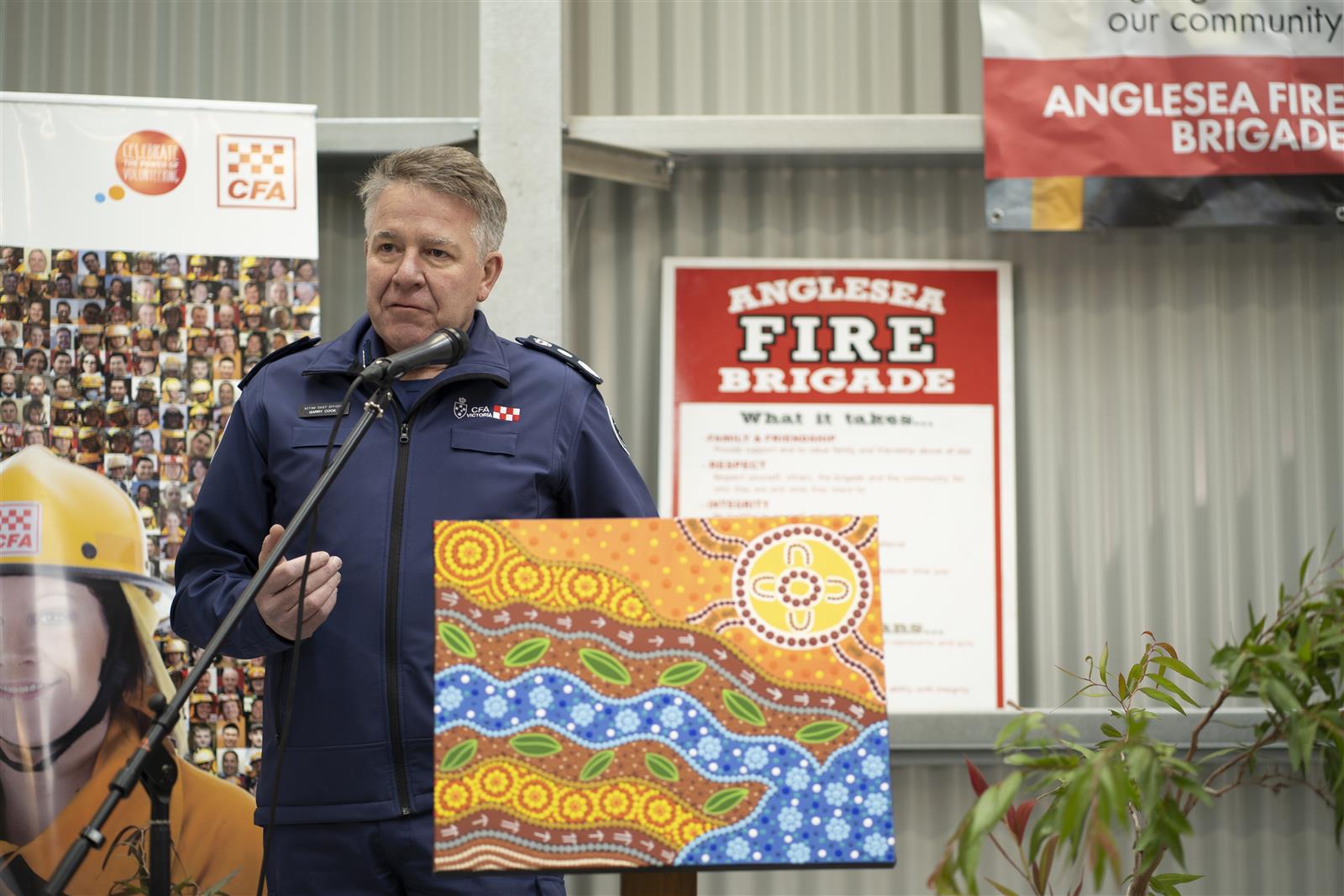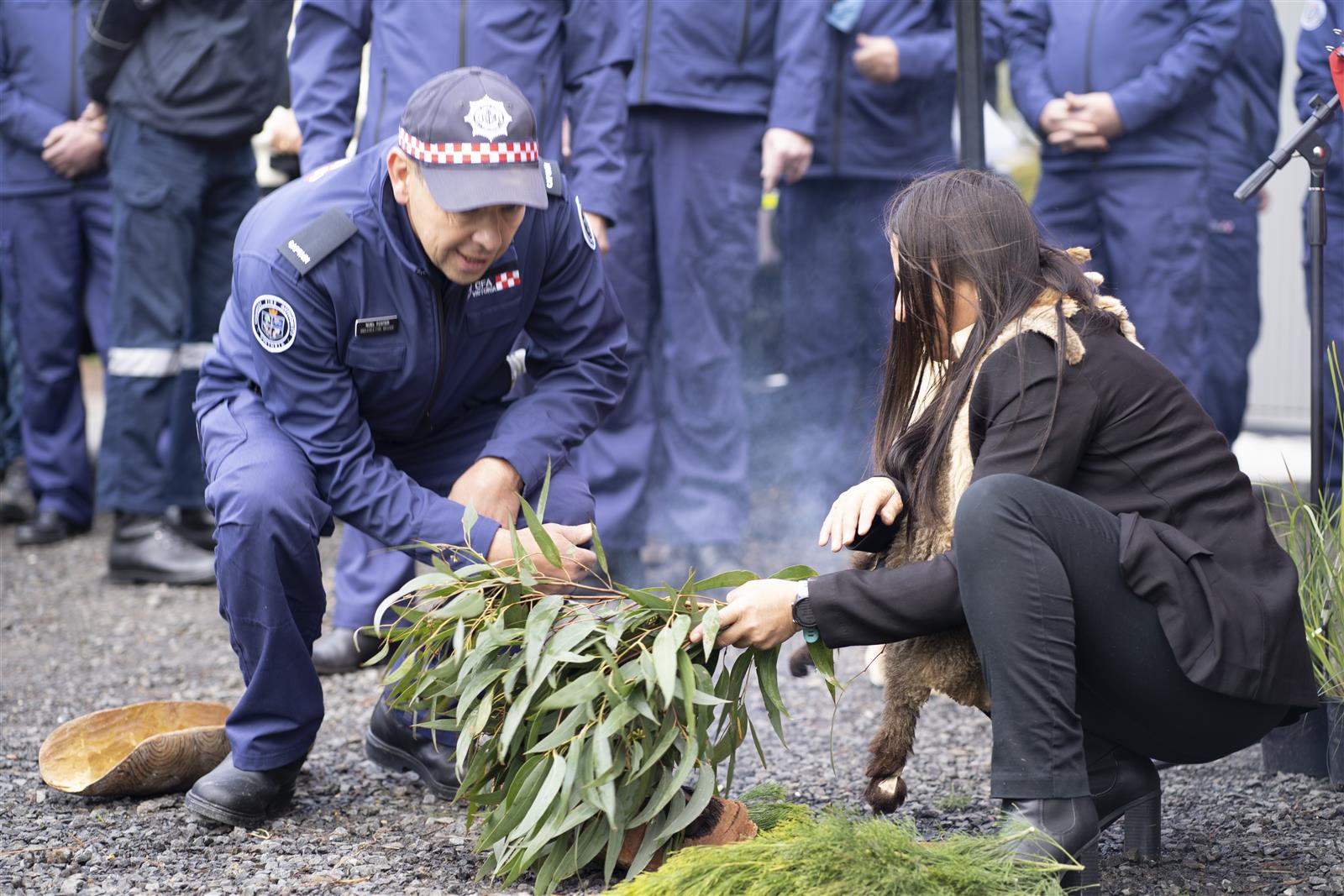
A sign for the new Anglesea satellite station, using artwork from Billy Jay O'Toole's painting ‘Gunyanggurta’, was generously gifted to the brigade and unveiled during the official station opening.
Wadawurrung representative Corrina Eccles performed a Welcome to Country and performed a smoking ceremony as part of official proceedings for the opening of the satellite station.
Information and background of the artwork is displayed on a sign at the station, and detailed below:
Gunyanggurta - Trust
Gunyanggurta is the Wadawurrung name for trust.
Wadawurrung people cared for country using traditional Fire burning practices, many feet have walked across the landscape for thousands of years. CFA volunteers come together to protect Country and have done since CFA was established.
CFA volunteers hold significant responsibilities in the community to protect communities from the dangers of bushfires, communities hold trust in their CFA volunteers.
Kuarka Doola - Anglesea
Kuarka Doola is the original name of Angelsea, meaning a place Wadawurrung people fished for mullet.
The salt water and river come together, the sunrise is seen East on the salt waters and the sunset is seen West on the Heath of our inland country. Many Kangaroo’s and Wallabies roam across Country, they are seen by the many people that live and come and gather in Anglesea.
Water is life blood of Country and the River often connects together to the sea country, our Salt water Country.
Wiyn Murrup – Fire spirit
Wadawurrung people didn’t fear fire, Fire is a spirit to care for country.
Fire was part of daily practices, cooking, making tools, healing, light, sacred ceremonies, and used to care for country using traditional knowledge and knowledge of country and their own seasons.
At the right time, our ancestors would conduct fire stick burning also known as cultural burning, this was the cultural practice of our people to regularly use fire to burn vegetation, which has been practiced for thousands of years.
It improves the health of the land, wildlife, and our people by setting cool burns, little managed spot fires with smaller, more controlled flames during the early, cool dry season.
Used to clean up the dry fallen scrub, to clear and allow the moist and rain to nourish country, to regenerate country and keep it moist during the hot season.
In some areas this created expansive grassland on good soils that in turn encouraged kangaroos to come and many other small mammals and birds.
Having knowledge of country and selecting what areas to burn, when, and how often, was part of Wadawurrung cultural knowledge systems and structure, Country provided the knowledge to Elders that was passed down to generations, knowledge of the land and how to care for the land and live on the land with no greed or harm was education.
Using traditional Fire burning practices to care for country was a way of managing so there was not hot and fierce fires like we see today.
Still today, Wadawurrung people are conducting their fire burning practices and hope this can grow to be a choice in caring for Wadawurrung Country.
 Acting Chief Officer Garry Cook
Acting Chief Officer Garry Cook-
 Captain Noel Foster and Wadawurrung representative Corrina Eccles
Captain Noel Foster and Wadawurrung representative Corrina Eccles
-
-
-